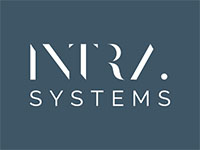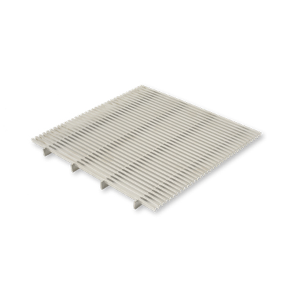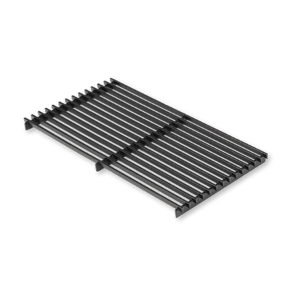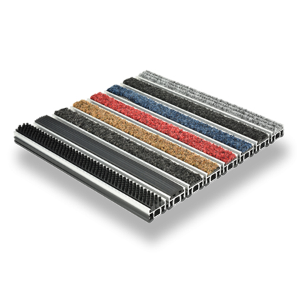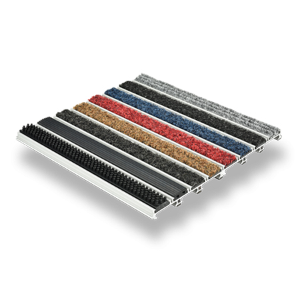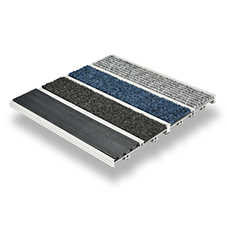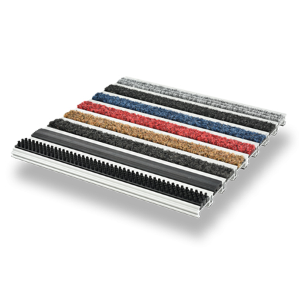Entrance matting at railway stations, airports, underground and bus stations has a tough job. Not only does it have to absorb dirt and moisture from millions of footfalls every year, it also needs to withstand an assortment of wheels and wheeled vehicles, meet stringent safety standards and is often open to the elements for most of its life.
In this blog INTRAsystems look at key entrance matting considerations for transport hubs and provide guidance for specifying commercial entrance matting in these highly specialised environments.
Safety First
In busy transport hubs safety of the public is the main priority. As well as reducing the likelihood of slips from excess moisture on footwear and floors, commercial entrance matting can play a crucial role in keeping your entryways safe in an emergency.
Entrance Matting Fire Ratings
The European Safety Standard, EN 13501-1, ranks construction materials in 7 classes from A1 to F (non-combustible to easily flammable) regarding their reaction and behaviour to fire. Materials are also rated according to their smoke emissions, from class s1 (absent/weak) to s3 (high).
By specifying materials that have a limited or very limited contribution to fire and smoke, you ensure a safe evacuation point for occupants in emergency situations.
For example, INTRAlux Ultima, INTRAlux Premier and INTRAlux Grafic fibres are all Bfl-s1 rated which is the highest possible standard for entrance matting fibre. This means they have a very limited contribution to fire and little to no smoke emissions.
For underground stations and high-risk areas INTRAsystems also offer a specialist Fire Retardant entrance matting system, which is authorised for use across the London Underground network including Section 12 locations.
This system is made from A1-rated (non-combustible) aluminium, with multi-directional rubber inserts that meet both the BS6853 Cat 1A requirements and achieve the highest HL3 rating under EN45545 -2 – the European railway standard for fire safety.
To find out more read their blog, ‘Fire Resistant Entrance Matting for Travel Termini’.
Further Specification Guidance
With such high volumes of multi-directional traffic, size and strength of the matting are two more key considerations for your specification.
With heavy wheeled cases, PRM vehicles and baggage trolleys crossing the entrance matting regularly, you need to specify a high strength system that can withstand these loads over the long-term.
It is also essential that the entrance matting is of a suitable size to provide enough walk-off area. The minimum length recommended by BS 7953 is just 2.1m which will be wholly inadequate for an airport, bus, or train station.
For best performance, the matting should extend at least 1m each side of the entrance and 5-8 metres in the direction of traffic in these environments.
Product Recommendations
The INTRAform DM and INTRAflow Plus entrance matting systems are ideal for these heavy-duty applications.
INTRAflow Plus is particularly suited to very exposed situations or external matting. The built-in drainage channels allow moisture to drain away into the mat well beneath and can be used in conjunction with the INTRAmattting Waterlogic drainable mat well base to provide optimum moisture drainage.
With an extremely strong aluminium construction, both systems offer the benefit of double-width inserts. These extra wide inserts maximise the fibre and rubber used within the entrance matting to provide exceptional dirt and moisture removal and retention.
Both systems are also compatible with the complete ranges of fibre and rubber inserts, so you can specify any combination practical for your design and safety requirements, all within a single system.
The Bfl-s1 rated INTRAlux Premier is a popular insert choice within busy transport hubs as its polyamide fibre can absorb 4.8 litres/m² while its flecked design helps to disguise soiling.
For London Underground stations and other high risk areas INTRAsystems recommend their specialist Section 12 fire-retardant INTRAform FR entrance matting system. These specialist inserts can also be combined with fibre inserts in other systems to create a safe and durable entrance mat.
4 Key Takeaways
In short, there are 4 key things to consider when specifying entrance matting for road, rail, and air:
1. Fire safety
Specify Bfl-S1 rated inserts, or specialist section 12 compliant inserts for high risk locations
2. Exposure
If the mat will be exposed to rain or excess moisture, consider installing a drainable mat well base.
3. Strength
Specify a strong aluminium system to withstand heavy wheeled loads.
4. Size
Make sure your matting extends at least 1m beyond the doors and 5-8 metres in the direction of traffic
For additional peace of mind, write a prescriptive entrance matting specification with the manufacturers exact product details to ensure what you have carefully specified is delivered in the final build.
To see some of INTRAsystem's installations and sample specification in this sector view their Transport Hubs case studies or contact the team today to discuss your project needs.
Specifying matting for road, rail and air
| T | 01425 472000 |
|---|---|
| F | 01425 481981 |
| E | info@intrasystems.co.uk |
| W | Visit INTRAsystems's website |
| Sustainability Info | |
| 6 Cobham Road, Ferndown, Wimborne, BH21 7PE |

%20resized-file108640.jpg)
%20(50)resized-file108641.jpg)
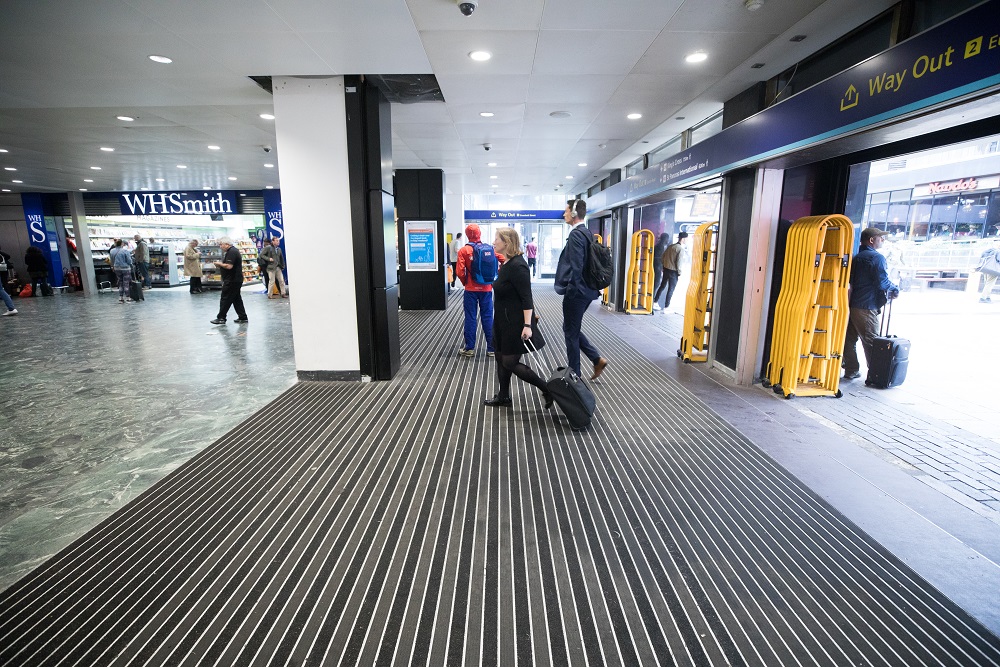
%20resized-file108643.jpg)
